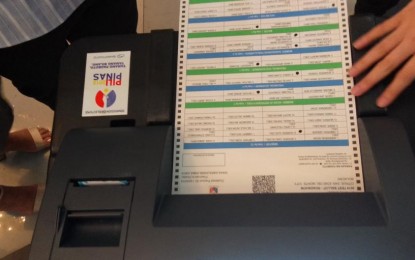An influential election watchdog group in the Philippines has assured voters of the security of the country’s automated elections system, ahead of the May 2022 elections.
“We have come a long way in terms of technological advancements in the way we vote. Our automated system is a big improvement over the old manual system,” said noted IT-professional Henry Aguda, a trustee of the Parish Pastoral Council for Responsible Voting (PPCRV), in an online voter education seminar.
PPCRV is a church-based citizen’s group which has been keeping watch over Philippine elections for three decades. It has over 500,000 volunteers all over the country.
PPCRV is a church-based citizen’s group which has been keeping watch over Philippine elections for three decades. It has over 500,000 volunteers all over the country. The Philippines started automating their elections in 2010 and since them the PPCRV has validated all election results.
Responding to questions during the webinar, Aguda said that the vote counting machine (VCM) lessens the possibility of electoral fraud. “We have experts who have seen how the source code is secure and how encryptions have been done,” he said.
Aguda further cited that VCMs run software that has been “meticulously developed for the purpose of counting votes.” He also cited the machine’s capability to detect duplicate or fake ballots, flag ballots intended for other machines, as well as other components of security such as the physical i-button keys held by poll workers.
“Our machines are very secure,” Aguda said, adding that “I cannot imagine somebody successfully rigging an election through the machines.”
Dr. William Yu, who is also an IT-professional and a trustee of the poll watchdog group reminded voters that the automated election system is a system. “It is important to recognize that this is a system. The VCM is secure but there are other things — the process, the i-buttons keys that are also part of the overall security,” he said.
“If you want to break the system you have to break all of those. And it’s not just the machine, you will also have to compromise all the people on the site, the volunteers,” he said.
Yu also dismissed the idea of a rouge vote counting machine being used to cheat.
“In case there is a shadow VCM or ghost VCM that is in the system, we should be able to track it down with our parallel count process. Not only are there controls within the system itself, but there are also controls that we as poll watchers are able to do,” Yu said.
As a way to further increase transparency of the system, Yu is advocating to increase the number of precincts that are audited in every Philippine election. The post-election audit performed is known as the random manual audit (RMA). “It always helps to have more checks and balances,” he said.
As a way to further increase transparency of the system, Yu is advocating to increase the number of precincts to be subjected to the random manual audit (RMA). “It always helps to have more checks and balances,” he said.
The RMA shows an increasing match between the electronic count and the manual count since 2010 when the Philippines started automating its elections. In 2010 it was 99.580%, 2013 -99.9474%, 2016 - 99.9027%, and 2019 - 99.9953%.



